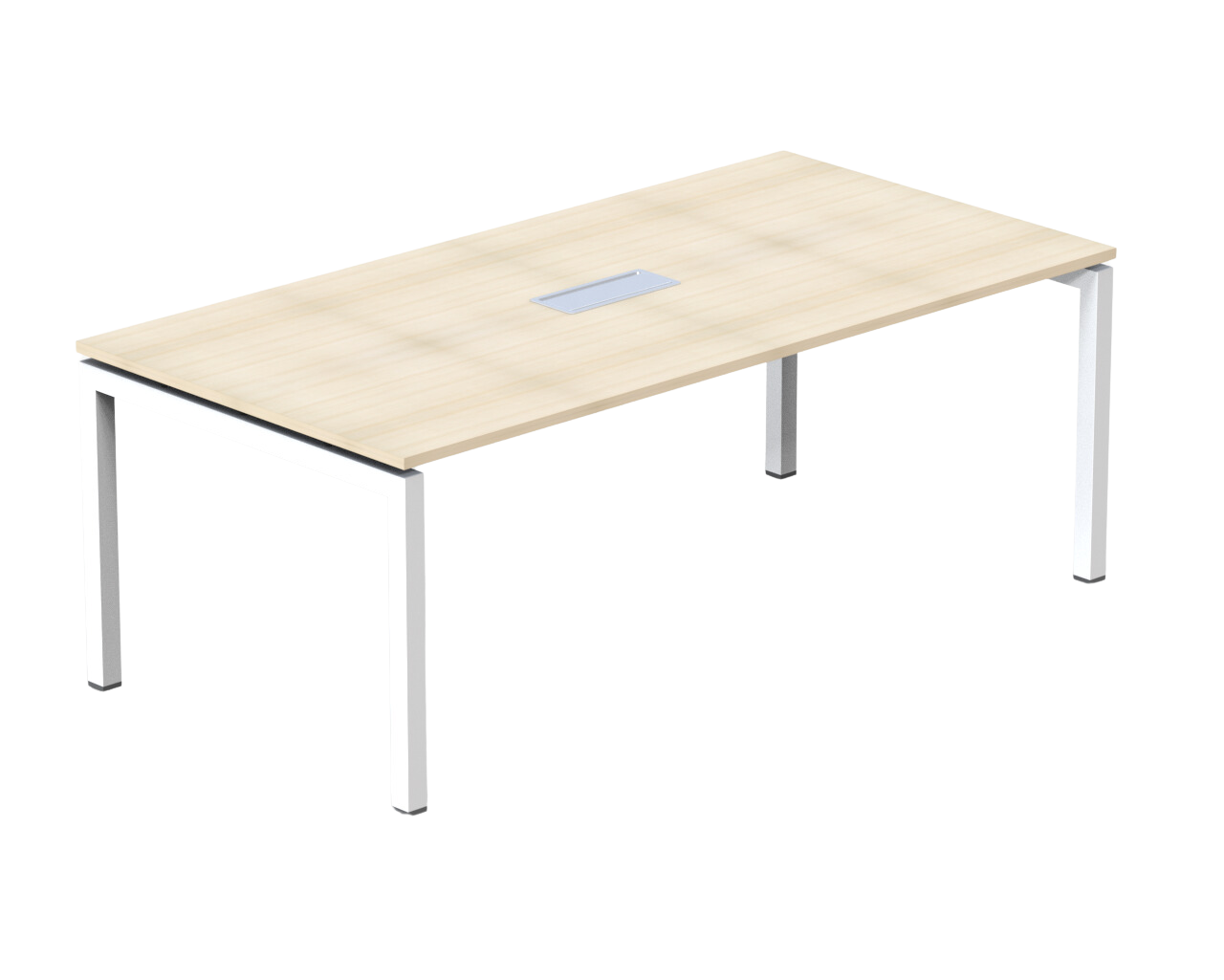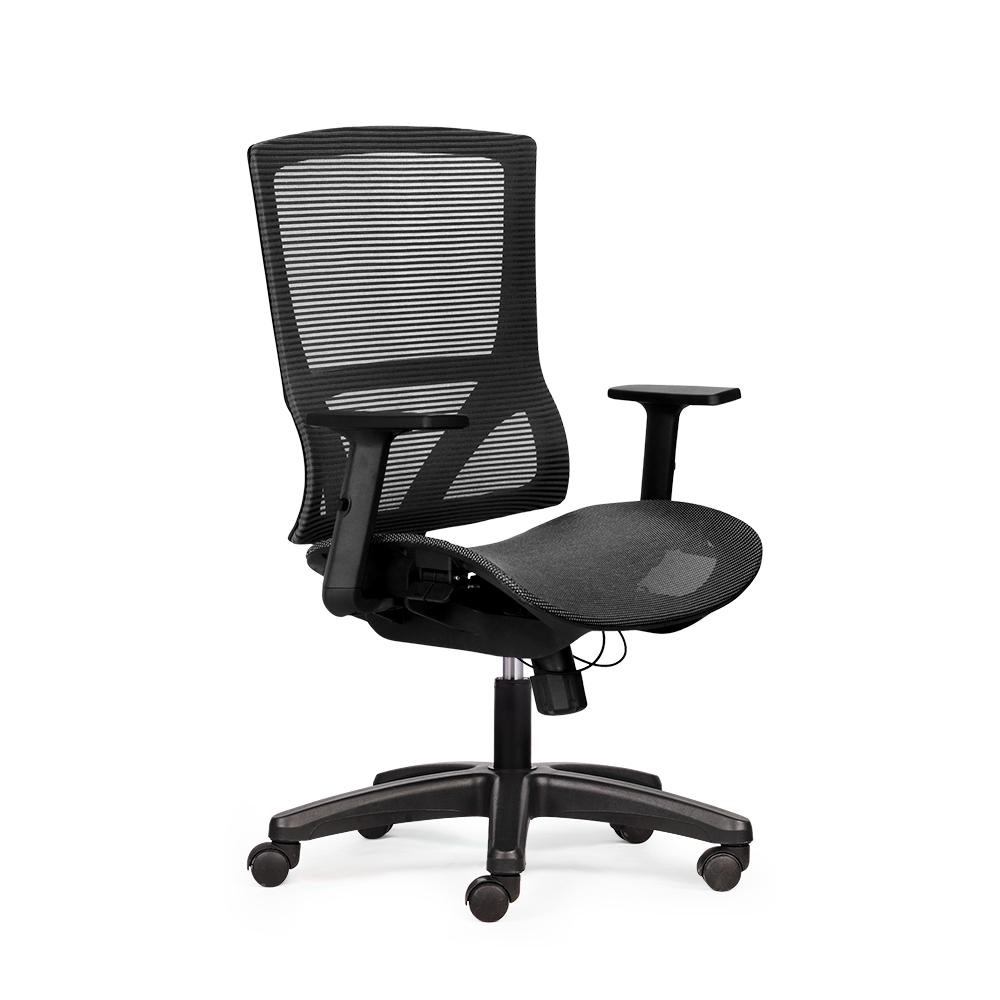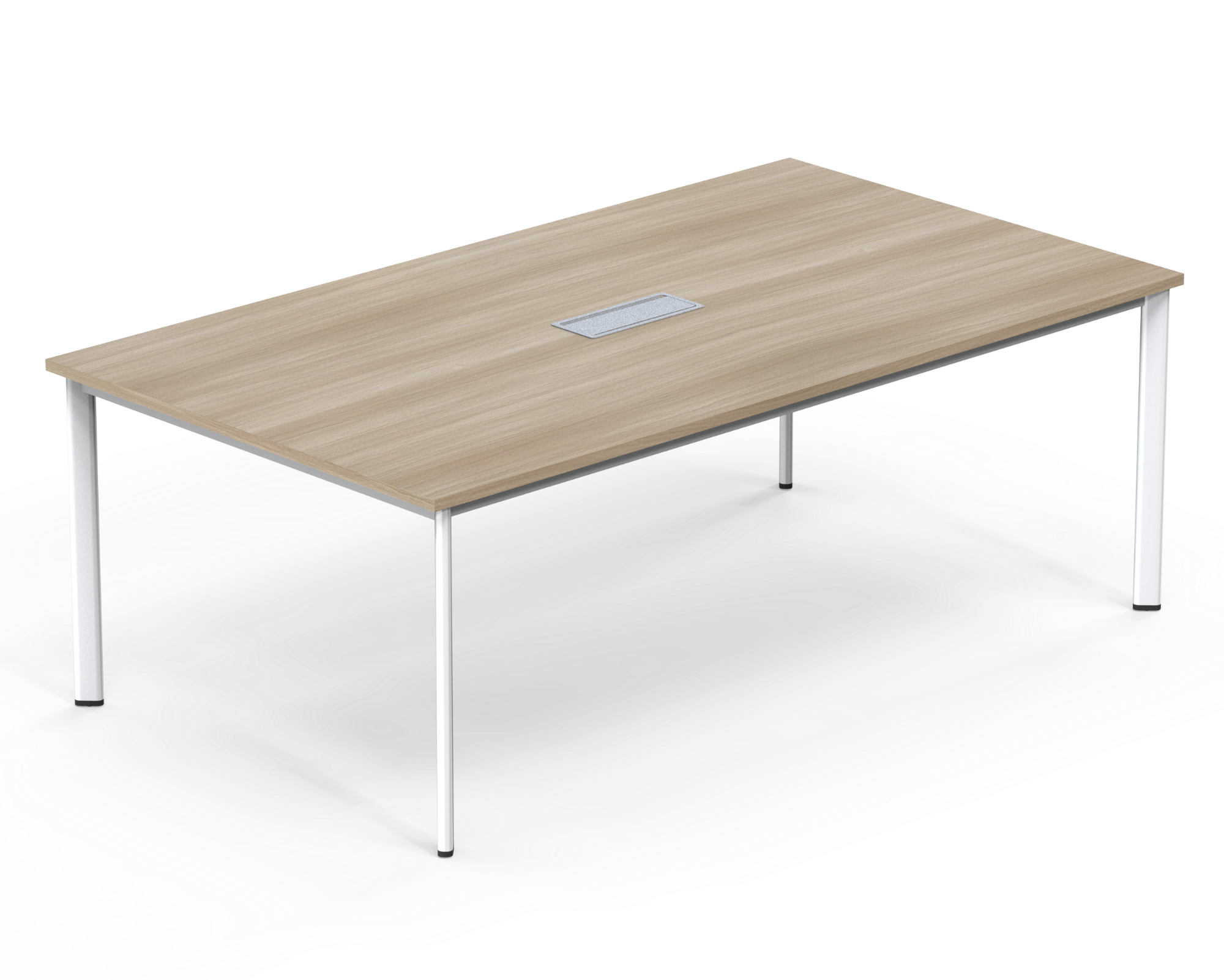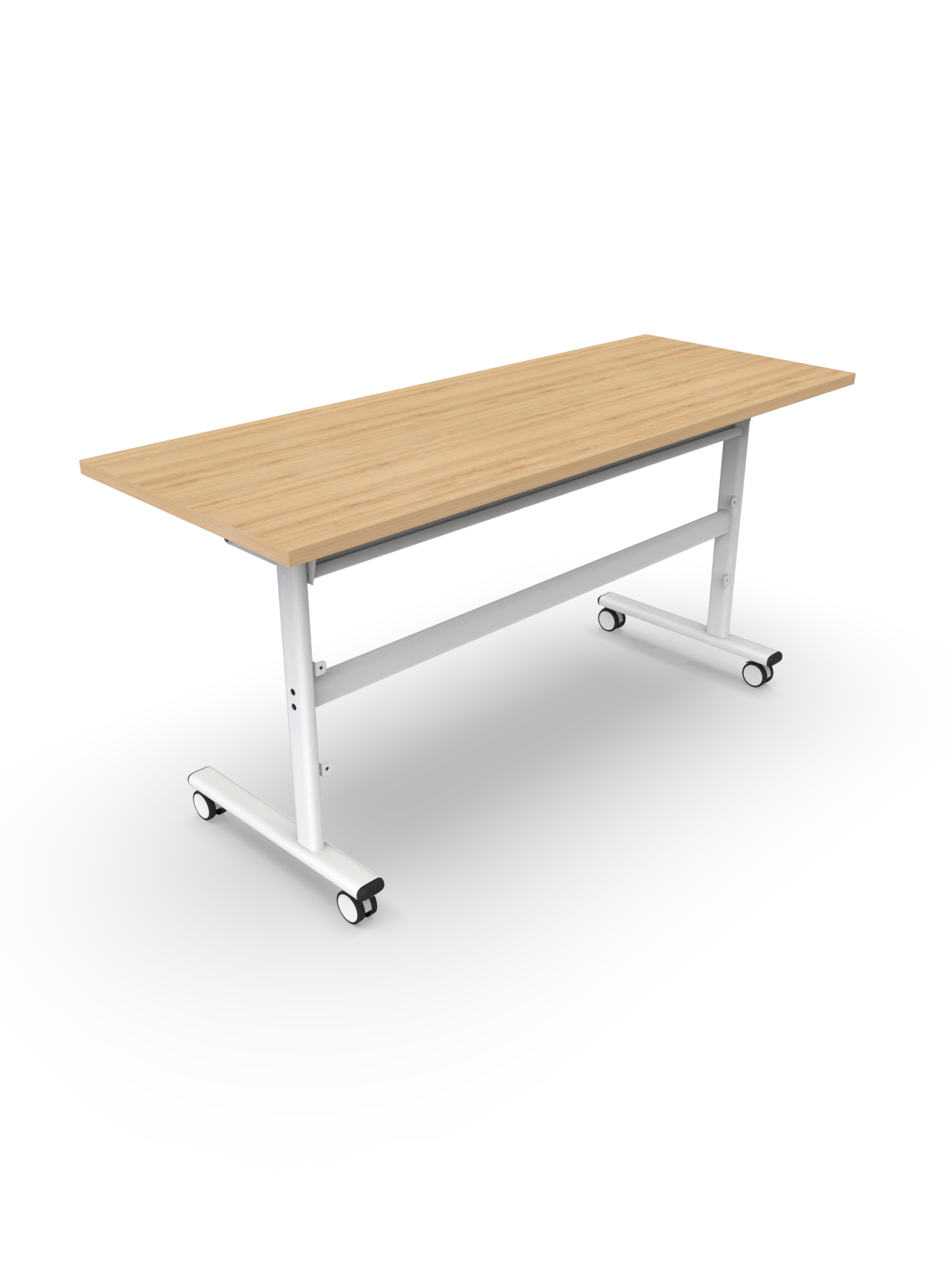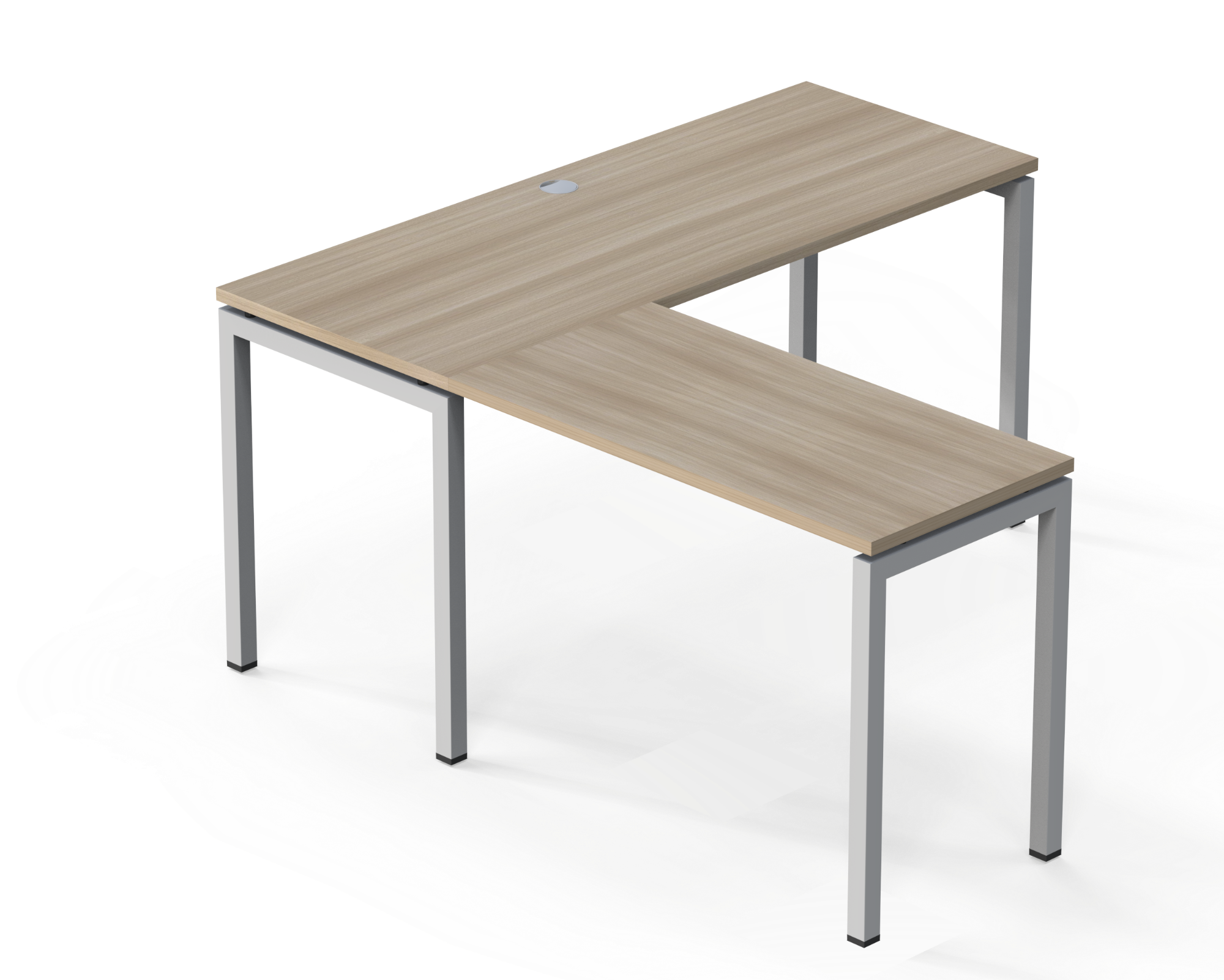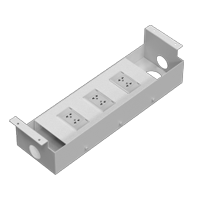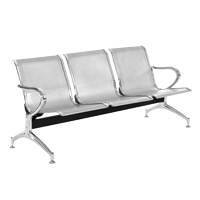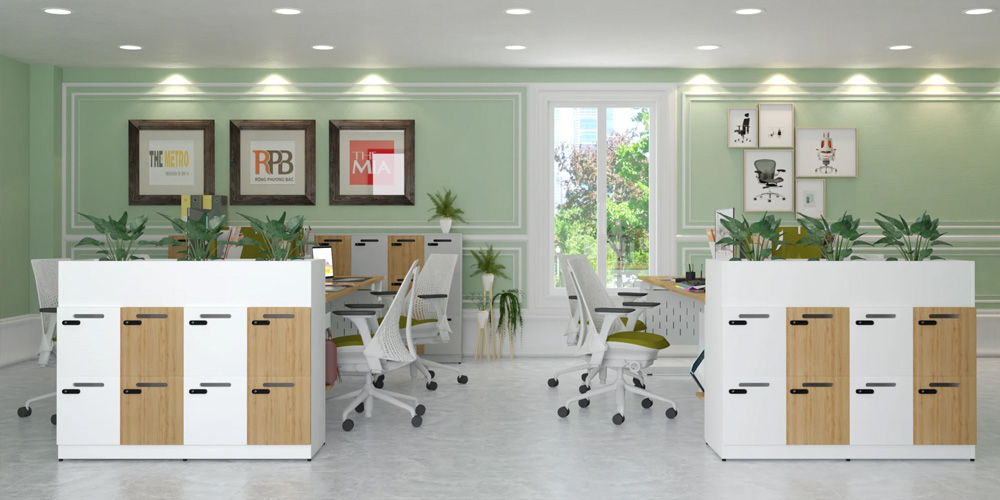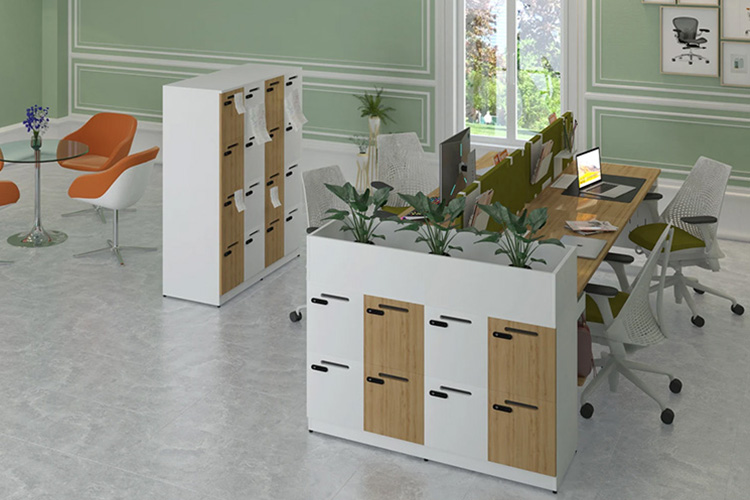
A complete guide to showcasing lockers in a professional showroom
In the furniture industry, a showroom is not just a place to sell products—it is a stage for customer experiences. For lockers, a product line increasingly popular in offices, schools, gyms, and public spaces, the way they are displayed in the showroom plays a decisive role in creating the first impression, inspiring purchase decisions, and elevating brand credibility.
A locker displayed in the right spot, with the right lighting, and paired with appropriate accessories will no longer appear as a “cold steel box,” but as a smart storage solution that enhances the overall workspace.
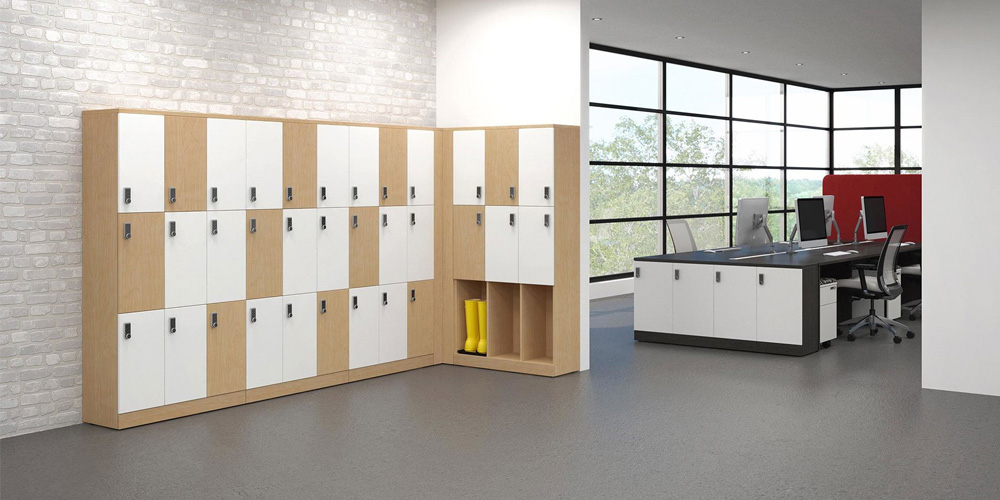
1. Why proper locker display in showrooms matters
1.1. Creating strong first impressions
Customers often judge a showroom within seconds of entering. If lockers are neatly arranged, categorized, and displayed with logic, visitors will immediately sense professionalism and be encouraged to stay longer. Conversely, a messy, crowded layout can make customers leave within minutes.
1.2. Helping customers visualize real applications
Lockers serve multiple environments: offices, gyms, schools, hospitals, and public spaces. Showing them in isolation makes it difficult for buyers to imagine usage. But by setting up application-based zones—for example, a corner mimicking an office with a row of lockers beside desks, or a gym with lockers in a changing area—customers can clearly picture how lockers will fit into their own projects.
1.3. Unlocking upsell and cross-sell opportunities
A locker displayed with add-on features such as electronic locks, keycards, name tags, ventilation holes, or USB charging ports will naturally raise customer interest in upgraded versions. This opens the door for showrooms to upsell (add value) or cross-sell (suggest related products), boosting revenue while giving customers more complete solutions.
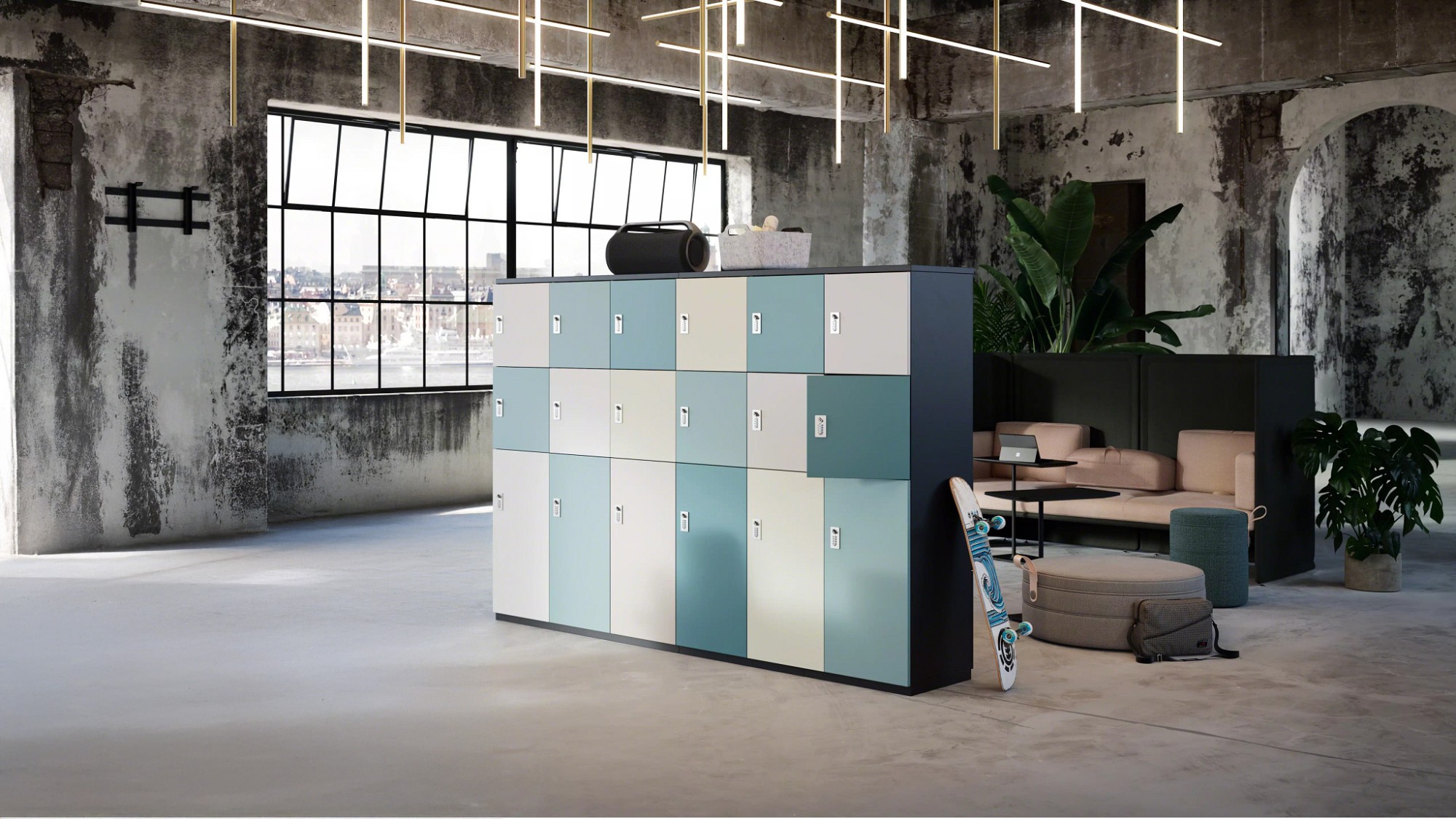
2. Golden principles for locker showroom display
2.1. Organize by product line and pricing segment
-
By size and compartments: Start with small units (4–6 compartments), then move to medium (12 compartments), and finally large modules (18–24 compartments) for easy comparison.
-
By pricing tier: From budget-friendly (basic powder-coated steel) → mid-range (melamine-coated particleboard or mixed steel & wood) → premium (veneer, MDF, or models with electronic locks).
This structured display helps customers “walk through a journey” of choices and make decisions based on their needs and budgets.
2.2. Use lighting to highlight finishes and colors
Lighting dramatically affects perception:
-
Powder-coated steel lockers: Use white spotlighting to showcase durability and a clean finish.
-
Wood-based lockers: Use warm yellow lighting to emphasize warmth and friendliness.
-
Premium lockers: Use focused spotlights to elevate elegance and create focal points in the showroom.
2.3. Display with accessories installed
Instead of showing plain lockers, display units with add-ons:
-
Install mechanical, number pad, and electronic locks side-by-side for comparison.
-
Add name tags, ventilation grills, and charging ports for realism.
-
For premium models, integrate demo screens showing digital locker management (e.g., card or mobile app).
-
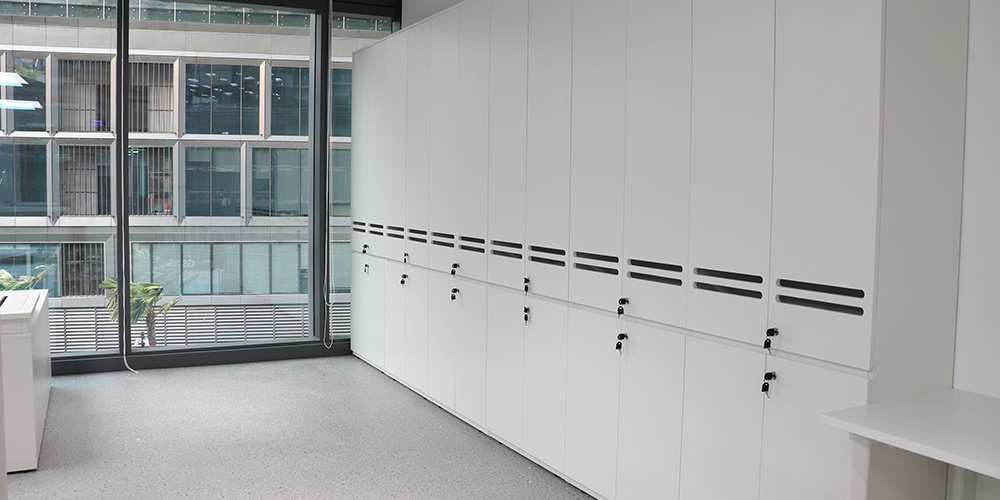
3. Recommended showroom layout for lockers
3.1. Real-life experience zone
Dedicate a section to simulate mini office or gym environments. For example: a workstation with desks, chairs, and a row of personal lockers nearby. Customers can try opening, storing a laptop, or hanging a jacket, directly feeling the convenience. This hands-on experience often triggers immediate buying decisions.
3.2. Concept-based display areas
Instead of displaying lockers in isolation, combine them with desks, chairs, and filing cabinets to create a unified setup. For instance: a “minimalist office” concept with white steel lockers, ergonomic chairs, and modern work tables. This not only demonstrates compatibility but also encourages customers to buy packages instead of single products.
Other news
1.1. Creating strong first impressions
Customers often judge a showroom within seconds of entering. If lockers are neatly arranged, categorized, and displayed with logic, visitors will immediately sense professionalism and be encouraged to stay longer. Conversely, a messy, crowded layout can make customers leave within minutes.
1.2. Helping customers visualize real applications
Lockers serve multiple environments: offices, gyms, schools, hospitals, and public spaces. Showing them in isolation makes it difficult for buyers to imagine usage. But by setting up application-based zones—for example, a corner mimicking an office with a row of lockers beside desks, or a gym with lockers in a changing area—customers can clearly picture how lockers will fit into their own projects.
1.3. Unlocking upsell and cross-sell opportunities
A locker displayed with add-on features such as electronic locks, keycards, name tags, ventilation holes, or USB charging ports will naturally raise customer interest in upgraded versions. This opens the door for showrooms to upsell (add value) or cross-sell (suggest related products), boosting revenue while giving customers more complete solutions.

2. Golden principles for locker showroom display
2.1. Organize by product line and pricing segment
-
By size and compartments: Start with small units (4–6 compartments), then move to medium (12 compartments), and finally large modules (18–24 compartments) for easy comparison.
-
By pricing tier: From budget-friendly (basic powder-coated steel) → mid-range (melamine-coated particleboard or mixed steel & wood) → premium (veneer, MDF, or models with electronic locks).
This structured display helps customers “walk through a journey” of choices and make decisions based on their needs and budgets.
2.2. Use lighting to highlight finishes and colors
Lighting dramatically affects perception:
-
Powder-coated steel lockers: Use white spotlighting to showcase durability and a clean finish.
-
Wood-based lockers: Use warm yellow lighting to emphasize warmth and friendliness.
-
Premium lockers: Use focused spotlights to elevate elegance and create focal points in the showroom.
2.3. Display with accessories installed
Instead of showing plain lockers, display units with add-ons:
-
Install mechanical, number pad, and electronic locks side-by-side for comparison.
-
Add name tags, ventilation grills, and charging ports for realism.
-
For premium models, integrate demo screens showing digital locker management (e.g., card or mobile app).
-

3. Recommended showroom layout for lockers
3.1. Real-life experience zone
Dedicate a section to simulate mini office or gym environments. For example: a workstation with desks, chairs, and a row of personal lockers nearby. Customers can try opening, storing a laptop, or hanging a jacket, directly feeling the convenience. This hands-on experience often triggers immediate buying decisions.
3.2. Concept-based display areas
Instead of displaying lockers in isolation, combine them with desks, chairs, and filing cabinets to create a unified setup. For instance: a “minimalist office” concept with white steel lockers, ergonomic chairs, and modern work tables. This not only demonstrates compatibility but also encourages customers to buy packages instead of single products.
Other news
Customers often judge a showroom within seconds of entering. If lockers are neatly arranged, categorized, and displayed with logic, visitors will immediately sense professionalism and be encouraged to stay longer. Conversely, a messy, crowded layout can make customers leave within minutes.
1.2. Helping customers visualize real applications
Lockers serve multiple environments: offices, gyms, schools, hospitals, and public spaces. Showing them in isolation makes it difficult for buyers to imagine usage. But by setting up application-based zones—for example, a corner mimicking an office with a row of lockers beside desks, or a gym with lockers in a changing area—customers can clearly picture how lockers will fit into their own projects.
1.3. Unlocking upsell and cross-sell opportunities
A locker displayed with add-on features such as electronic locks, keycards, name tags, ventilation holes, or USB charging ports will naturally raise customer interest in upgraded versions. This opens the door for showrooms to upsell (add value) or cross-sell (suggest related products), boosting revenue while giving customers more complete solutions.

2. Golden principles for locker showroom display
2.1. Organize by product line and pricing segment
-
By size and compartments: Start with small units (4–6 compartments), then move to medium (12 compartments), and finally large modules (18–24 compartments) for easy comparison.
-
By pricing tier: From budget-friendly (basic powder-coated steel) → mid-range (melamine-coated particleboard or mixed steel & wood) → premium (veneer, MDF, or models with electronic locks).
This structured display helps customers “walk through a journey” of choices and make decisions based on their needs and budgets.
2.2. Use lighting to highlight finishes and colors
Lighting dramatically affects perception:
-
Powder-coated steel lockers: Use white spotlighting to showcase durability and a clean finish.
-
Wood-based lockers: Use warm yellow lighting to emphasize warmth and friendliness.
-
Premium lockers: Use focused spotlights to elevate elegance and create focal points in the showroom.
2.3. Display with accessories installed
Instead of showing plain lockers, display units with add-ons:
-
Install mechanical, number pad, and electronic locks side-by-side for comparison.
-
Add name tags, ventilation grills, and charging ports for realism.
-
For premium models, integrate demo screens showing digital locker management (e.g., card or mobile app).
-

3. Recommended showroom layout for lockers
3.1. Real-life experience zone
Dedicate a section to simulate mini office or gym environments. For example: a workstation with desks, chairs, and a row of personal lockers nearby. Customers can try opening, storing a laptop, or hanging a jacket, directly feeling the convenience. This hands-on experience often triggers immediate buying decisions.
3.2. Concept-based display areas
Instead of displaying lockers in isolation, combine them with desks, chairs, and filing cabinets to create a unified setup. For instance: a “minimalist office” concept with white steel lockers, ergonomic chairs, and modern work tables. This not only demonstrates compatibility but also encourages customers to buy packages instead of single products.
Other news
Lockers serve multiple environments: offices, gyms, schools, hospitals, and public spaces. Showing them in isolation makes it difficult for buyers to imagine usage. But by setting up application-based zones—for example, a corner mimicking an office with a row of lockers beside desks, or a gym with lockers in a changing area—customers can clearly picture how lockers will fit into their own projects.
1.3. Unlocking upsell and cross-sell opportunities
A locker displayed with add-on features such as electronic locks, keycards, name tags, ventilation holes, or USB charging ports will naturally raise customer interest in upgraded versions. This opens the door for showrooms to upsell (add value) or cross-sell (suggest related products), boosting revenue while giving customers more complete solutions.

2. Golden principles for locker showroom display
2.1. Organize by product line and pricing segment
-
By size and compartments: Start with small units (4–6 compartments), then move to medium (12 compartments), and finally large modules (18–24 compartments) for easy comparison.
-
By pricing tier: From budget-friendly (basic powder-coated steel) → mid-range (melamine-coated particleboard or mixed steel & wood) → premium (veneer, MDF, or models with electronic locks).
This structured display helps customers “walk through a journey” of choices and make decisions based on their needs and budgets.
2.2. Use lighting to highlight finishes and colors
Lighting dramatically affects perception:
-
Powder-coated steel lockers: Use white spotlighting to showcase durability and a clean finish.
-
Wood-based lockers: Use warm yellow lighting to emphasize warmth and friendliness.
-
Premium lockers: Use focused spotlights to elevate elegance and create focal points in the showroom.
2.3. Display with accessories installed
Instead of showing plain lockers, display units with add-ons:
-
Install mechanical, number pad, and electronic locks side-by-side for comparison.
-
Add name tags, ventilation grills, and charging ports for realism.
-
For premium models, integrate demo screens showing digital locker management (e.g., card or mobile app).
-

3. Recommended showroom layout for lockers
3.1. Real-life experience zone
Dedicate a section to simulate mini office or gym environments. For example: a workstation with desks, chairs, and a row of personal lockers nearby. Customers can try opening, storing a laptop, or hanging a jacket, directly feeling the convenience. This hands-on experience often triggers immediate buying decisions.
3.2. Concept-based display areas
Instead of displaying lockers in isolation, combine them with desks, chairs, and filing cabinets to create a unified setup. For instance: a “minimalist office” concept with white steel lockers, ergonomic chairs, and modern work tables. This not only demonstrates compatibility but also encourages customers to buy packages instead of single products.
Other news
A locker displayed with add-on features such as electronic locks, keycards, name tags, ventilation holes, or USB charging ports will naturally raise customer interest in upgraded versions. This opens the door for showrooms to upsell (add value) or cross-sell (suggest related products), boosting revenue while giving customers more complete solutions.

2. Golden principles for locker showroom display
2.1. Organize by product line and pricing segment
-
By size and compartments: Start with small units (4–6 compartments), then move to medium (12 compartments), and finally large modules (18–24 compartments) for easy comparison.
-
By pricing tier: From budget-friendly (basic powder-coated steel) → mid-range (melamine-coated particleboard or mixed steel & wood) → premium (veneer, MDF, or models with electronic locks).
This structured display helps customers “walk through a journey” of choices and make decisions based on their needs and budgets.
2.2. Use lighting to highlight finishes and colors
Lighting dramatically affects perception:
-
Powder-coated steel lockers: Use white spotlighting to showcase durability and a clean finish.
-
Wood-based lockers: Use warm yellow lighting to emphasize warmth and friendliness.
-
Premium lockers: Use focused spotlights to elevate elegance and create focal points in the showroom.
2.3. Display with accessories installed
Instead of showing plain lockers, display units with add-ons:
-
Install mechanical, number pad, and electronic locks side-by-side for comparison.
-
Add name tags, ventilation grills, and charging ports for realism.
-
For premium models, integrate demo screens showing digital locker management (e.g., card or mobile app).
-

3. Recommended showroom layout for lockers
3.1. Real-life experience zone
Dedicate a section to simulate mini office or gym environments. For example: a workstation with desks, chairs, and a row of personal lockers nearby. Customers can try opening, storing a laptop, or hanging a jacket, directly feeling the convenience. This hands-on experience often triggers immediate buying decisions.
3.2. Concept-based display areas
Instead of displaying lockers in isolation, combine them with desks, chairs, and filing cabinets to create a unified setup. For instance: a “minimalist office” concept with white steel lockers, ergonomic chairs, and modern work tables. This not only demonstrates compatibility but also encourages customers to buy packages instead of single products.
Other news
2.1. Organize by product line and pricing segment
-
By size and compartments: Start with small units (4–6 compartments), then move to medium (12 compartments), and finally large modules (18–24 compartments) for easy comparison.
-
By pricing tier: From budget-friendly (basic powder-coated steel) → mid-range (melamine-coated particleboard or mixed steel & wood) → premium (veneer, MDF, or models with electronic locks).
This structured display helps customers “walk through a journey” of choices and make decisions based on their needs and budgets.
2.2. Use lighting to highlight finishes and colors
Lighting dramatically affects perception:
-
Powder-coated steel lockers: Use white spotlighting to showcase durability and a clean finish.
-
Wood-based lockers: Use warm yellow lighting to emphasize warmth and friendliness.
-
Premium lockers: Use focused spotlights to elevate elegance and create focal points in the showroom.
2.3. Display with accessories installed
Instead of showing plain lockers, display units with add-ons:
-
Install mechanical, number pad, and electronic locks side-by-side for comparison.
-
Add name tags, ventilation grills, and charging ports for realism.
-
For premium models, integrate demo screens showing digital locker management (e.g., card or mobile app).
-

3. Recommended showroom layout for lockers
3.1. Real-life experience zone
Dedicate a section to simulate mini office or gym environments. For example: a workstation with desks, chairs, and a row of personal lockers nearby. Customers can try opening, storing a laptop, or hanging a jacket, directly feeling the convenience. This hands-on experience often triggers immediate buying decisions.
3.2. Concept-based display areas
Instead of displaying lockers in isolation, combine them with desks, chairs, and filing cabinets to create a unified setup. For instance: a “minimalist office” concept with white steel lockers, ergonomic chairs, and modern work tables. This not only demonstrates compatibility but also encourages customers to buy packages instead of single products.
Other news
-
By size and compartments: Start with small units (4–6 compartments), then move to medium (12 compartments), and finally large modules (18–24 compartments) for easy comparison.
-
By pricing tier: From budget-friendly (basic powder-coated steel) → mid-range (melamine-coated particleboard or mixed steel & wood) → premium (veneer, MDF, or models with electronic locks).
This structured display helps customers “walk through a journey” of choices and make decisions based on their needs and budgets.
2.2. Use lighting to highlight finishes and colors
Lighting dramatically affects perception:
-
Powder-coated steel lockers: Use white spotlighting to showcase durability and a clean finish.
-
Wood-based lockers: Use warm yellow lighting to emphasize warmth and friendliness.
-
Premium lockers: Use focused spotlights to elevate elegance and create focal points in the showroom.
2.3. Display with accessories installed
Instead of showing plain lockers, display units with add-ons:
-
Install mechanical, number pad, and electronic locks side-by-side for comparison.
-
Add name tags, ventilation grills, and charging ports for realism.
-
For premium models, integrate demo screens showing digital locker management (e.g., card or mobile app).
-

3. Recommended showroom layout for lockers
3.1. Real-life experience zone
Dedicate a section to simulate mini office or gym environments. For example: a workstation with desks, chairs, and a row of personal lockers nearby. Customers can try opening, storing a laptop, or hanging a jacket, directly feeling the convenience. This hands-on experience often triggers immediate buying decisions.
3.2. Concept-based display areas
Instead of displaying lockers in isolation, combine them with desks, chairs, and filing cabinets to create a unified setup. For instance: a “minimalist office” concept with white steel lockers, ergonomic chairs, and modern work tables. This not only demonstrates compatibility but also encourages customers to buy packages instead of single products.
Other news
Lighting dramatically affects perception:
-
Powder-coated steel lockers: Use white spotlighting to showcase durability and a clean finish.
-
Wood-based lockers: Use warm yellow lighting to emphasize warmth and friendliness.
-
Premium lockers: Use focused spotlights to elevate elegance and create focal points in the showroom.
2.3. Display with accessories installed
Instead of showing plain lockers, display units with add-ons:
-
Install mechanical, number pad, and electronic locks side-by-side for comparison.
-
Add name tags, ventilation grills, and charging ports for realism.
-
For premium models, integrate demo screens showing digital locker management (e.g., card or mobile app).
-

3. Recommended showroom layout for lockers
3.1. Real-life experience zone
Dedicate a section to simulate mini office or gym environments. For example: a workstation with desks, chairs, and a row of personal lockers nearby. Customers can try opening, storing a laptop, or hanging a jacket, directly feeling the convenience. This hands-on experience often triggers immediate buying decisions.
3.2. Concept-based display areas
Instead of displaying lockers in isolation, combine them with desks, chairs, and filing cabinets to create a unified setup. For instance: a “minimalist office” concept with white steel lockers, ergonomic chairs, and modern work tables. This not only demonstrates compatibility but also encourages customers to buy packages instead of single products.
Other news
Instead of showing plain lockers, display units with add-ons:
-
Install mechanical, number pad, and electronic locks side-by-side for comparison.
-
Add name tags, ventilation grills, and charging ports for realism.
-
For premium models, integrate demo screens showing digital locker management (e.g., card or mobile app).
3. Recommended showroom layout for lockers
3.1. Real-life experience zone
Dedicate a section to simulate mini office or gym environments. For example: a workstation with desks, chairs, and a row of personal lockers nearby. Customers can try opening, storing a laptop, or hanging a jacket, directly feeling the convenience. This hands-on experience often triggers immediate buying decisions.
3.2. Concept-based display areas
Instead of displaying lockers in isolation, combine them with desks, chairs, and filing cabinets to create a unified setup. For instance: a “minimalist office” concept with white steel lockers, ergonomic chairs, and modern work tables. This not only demonstrates compatibility but also encourages customers to buy packages instead of single products.
Other news
3.1. Real-life experience zone
Dedicate a section to simulate mini office or gym environments. For example: a workstation with desks, chairs, and a row of personal lockers nearby. Customers can try opening, storing a laptop, or hanging a jacket, directly feeling the convenience. This hands-on experience often triggers immediate buying decisions.
3.2. Concept-based display areas
Instead of displaying lockers in isolation, combine them with desks, chairs, and filing cabinets to create a unified setup. For instance: a “minimalist office” concept with white steel lockers, ergonomic chairs, and modern work tables. This not only demonstrates compatibility but also encourages customers to buy packages instead of single products.
Dedicate a section to simulate mini office or gym environments. For example: a workstation with desks, chairs, and a row of personal lockers nearby. Customers can try opening, storing a laptop, or hanging a jacket, directly feeling the convenience. This hands-on experience often triggers immediate buying decisions.
3.2. Concept-based display areas
Instead of displaying lockers in isolation, combine them with desks, chairs, and filing cabinets to create a unified setup. For instance: a “minimalist office” concept with white steel lockers, ergonomic chairs, and modern work tables. This not only demonstrates compatibility but also encourages customers to buy packages instead of single products.
Instead of displaying lockers in isolation, combine them with desks, chairs, and filing cabinets to create a unified setup. For instance: a “minimalist office” concept with white steel lockers, ergonomic chairs, and modern work tables. This not only demonstrates compatibility but also encourages customers to buy packages instead of single products.
